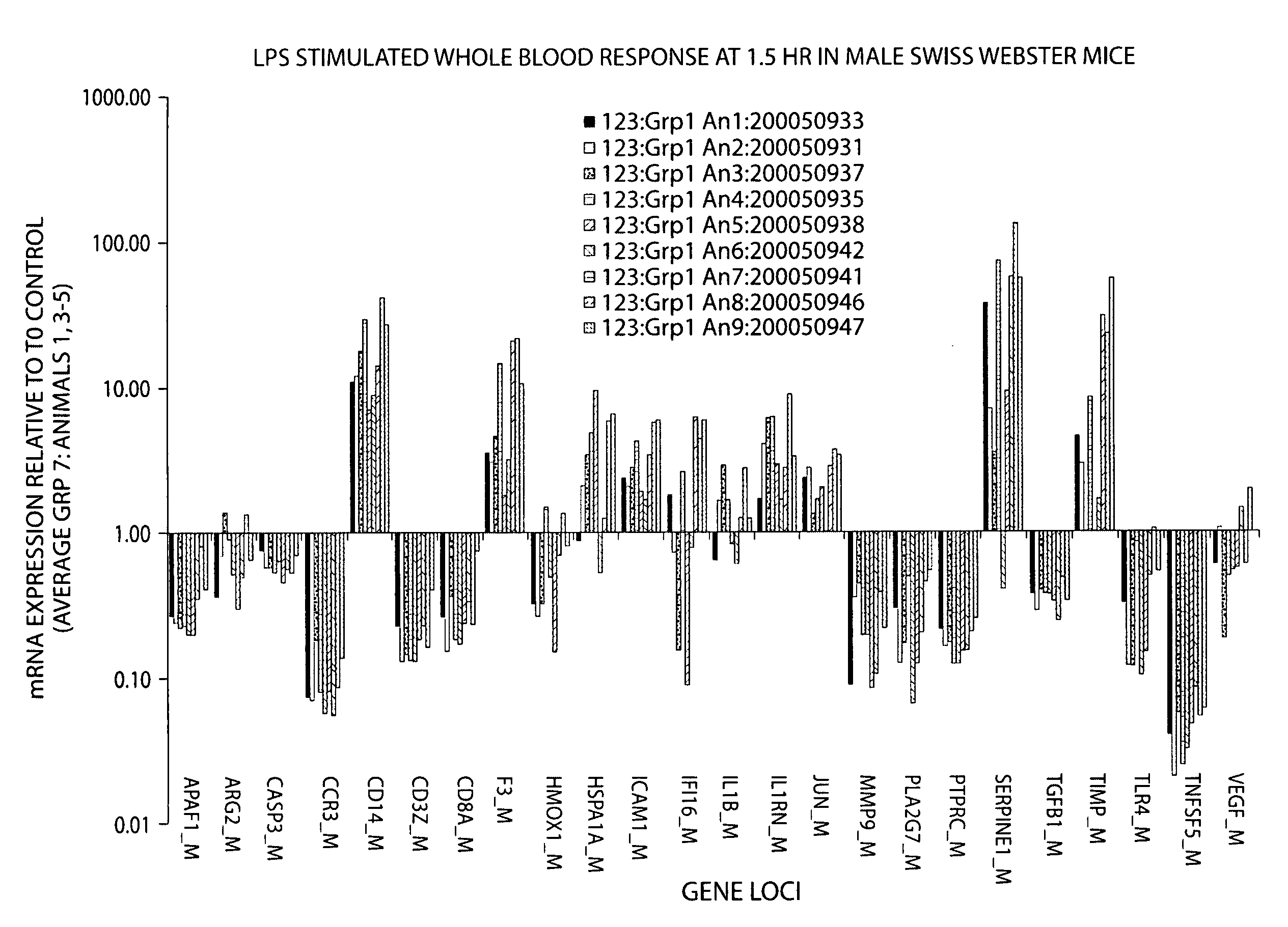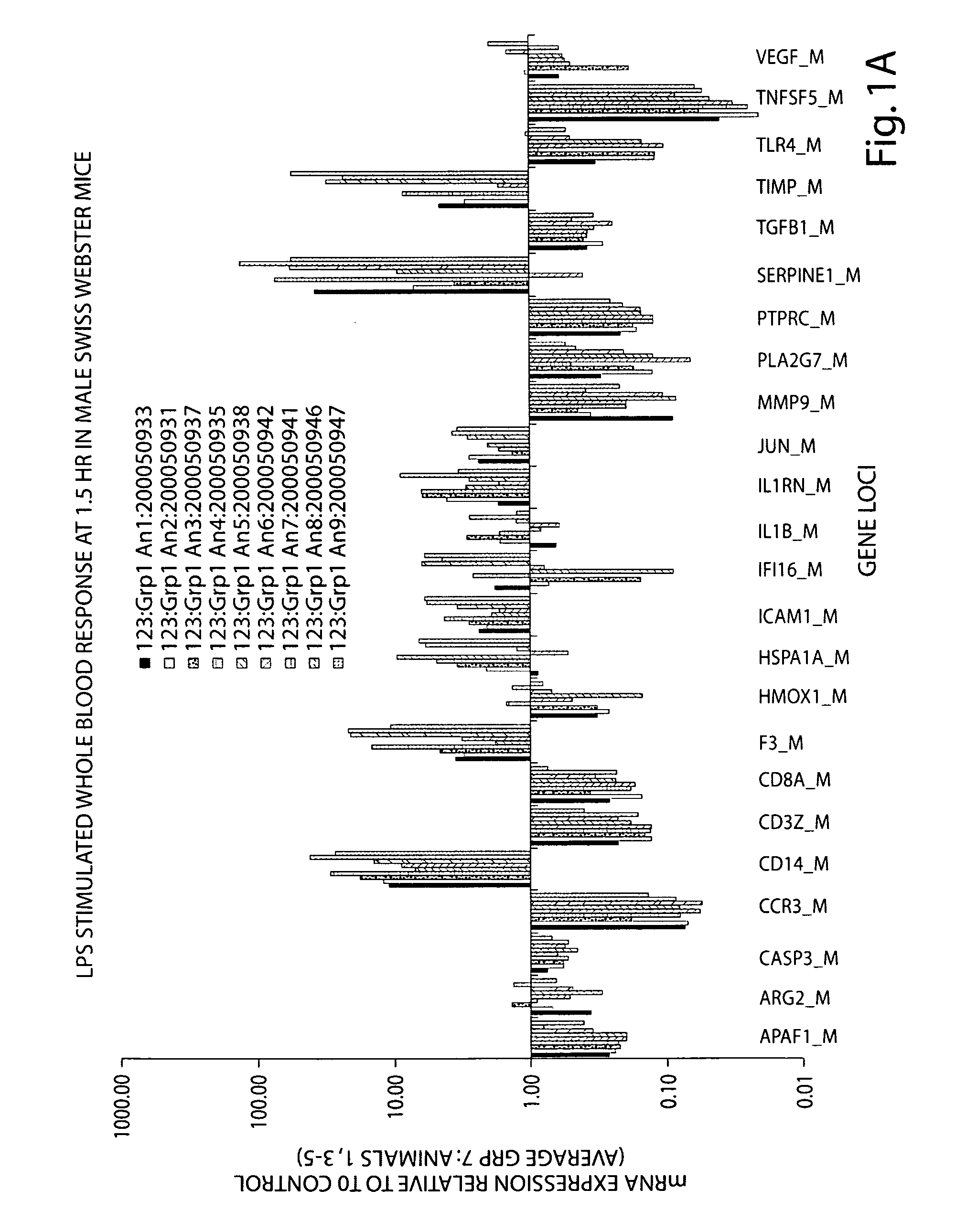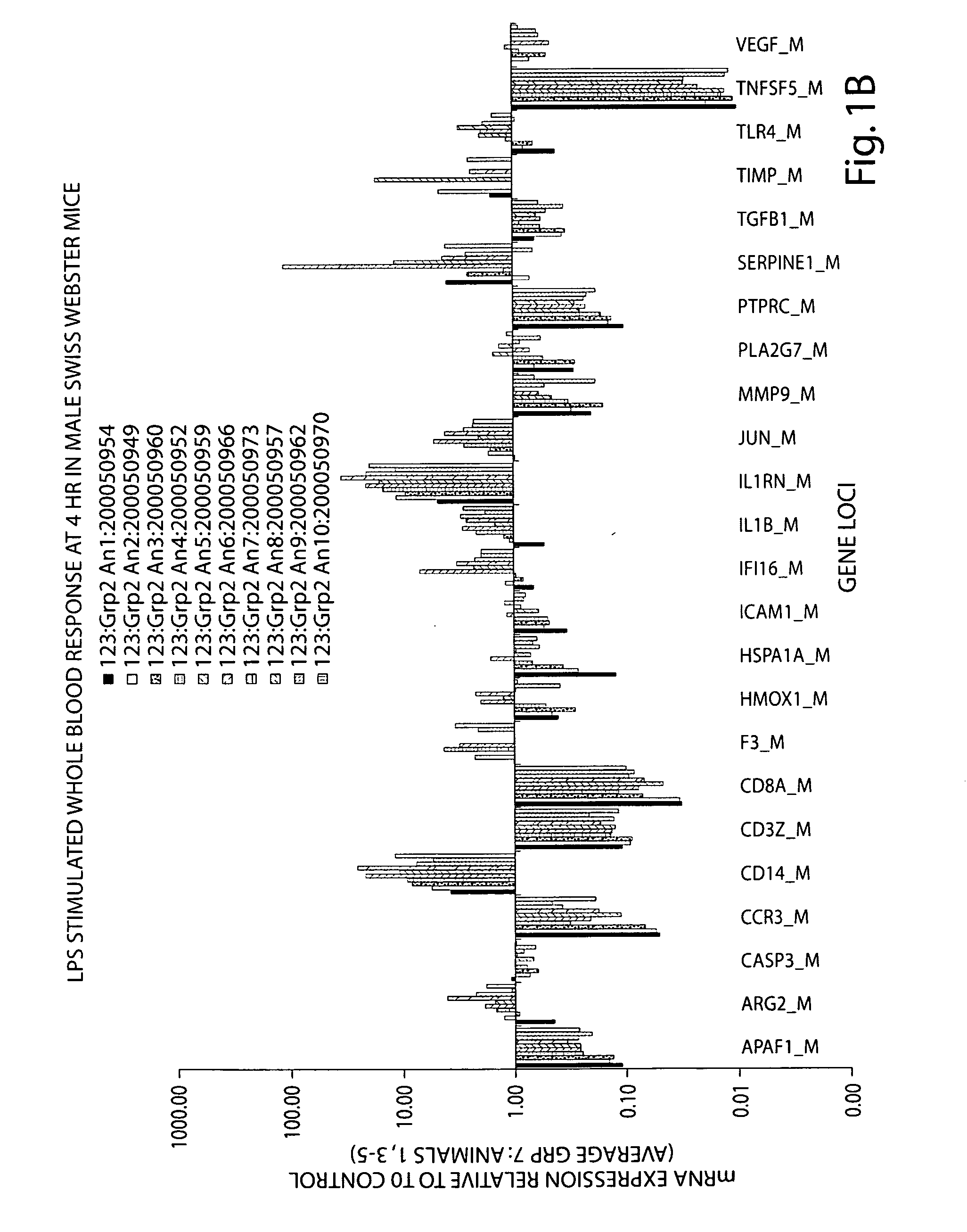Assessment of effect of an agent on a human biological condition using rodent gene expression panels
a technology of gene expression and human biological condition, applied in the field of gene expression data, can solve the problems of many agents failing animal testing
- Summary
- Abstract
- Description
- Claims
- Application Information
AI Technical Summary
Benefits of technology
Problems solved by technology
Method used
Image
Examples
example 1
Mouse Gene Expression Analysis in Whole Blood
Assay 1
[0225]Whole blood samples from five male and five female BALB / c mice were collected on a weekly basis over the course of three weeks to evaluate the longitudinal gene expression response in murine whole blood. Gene expression analysis was performed by quantitative PCR (QPCR) using a custom 24-gene Mouse Expression Panel (Precision Profile™) for Inflammation (Table 3).
[0226]Normalized ΔCt values for all ten mice (BALB / c) over a 3 week time period are provided in Table 10.
[0227]Inter-subject variability within individual groups was determined by the % CV (coefficient of variation) from all ten animals on a weekly basis (Table 10). Percent CV's were observed to be less than 4%, with the exception of one gene, PLAU, at week 2. These data demonstrate a remarkable consistency in levels of gene expression within the 10 animals in each group on a weekly basis for all three weeks.
[0228]Intersubject variability for all three groups was also ...
example 2
Gene Expression in Human and Mouse Whole Blood stimulated with LPS In Vivo
[0237]The gene expression response in whole blood from human (N=3) and murine (N=9-10) subjects exposed to a single dose of bacterial endotoxin (lipopolysaccharide, LPS) is presented in Table 16 and FIGS. 5A-5C. Whole blood samples were collected at three time points post LPS dosing for all subjects. A comparison of the human and murine response relative to that of the untreated baseline control is collectively shown in FIGS. 5A-5C.
[0238]The relative gene expression response of human and murine whole blood at 2 and 1.5 hours post LPS is shown in FIG. 5A for 17 genes. The pattern of response for 9 of the 17 genes, specifically, CD3Z, CD8A, HMOX1, HSPA1A, ICAM1, IL1RN, PLA2G7 SERPINE1 and TNFSF5, is very similar between human and murine subjects, though the magnitude of response for some of these genes is variable. Two genes, MMP9 and TGBF1 show a divergent response at these time-points. The remaining genes diff...
example 3
Gene Expression in Human Whole Blood Stimulated with LPS In Vivo and In Vitro
[0241]The gene expression response in whole blood from human subjects (N=3) exposed to a single dose of bacterial endotoxin (lipopolysaccharide, LPS) in vivo and human whole blood treated with LPS in vitro N=1), is presented in Table 17 and FIGS. 6A-6C. Whole blood samples were collected at three time points post LPS dosing for all subjects. A comparison of the in vivo and in vitro response relative to that of the untreated baseline control is collectively shown in FIGS. 6A-6C.
[0242]At the 2 hour time-point, 21 of 38 genes show a strikingly similar pattern of expression for both in vivo and in vitro samples (FIG. 6A) for 31 the 31 genes examined. For most genes, the magnitude of expression of the in vitro sample is greater than that observed in vivo. A few differences in expression can also be noted, specifically, the genes CSF3, F3 and IL10 are induced in vitro and remain unchanged in vivo.
[0243]The magnit...
PUM
| Property | Measurement | Unit |
|---|---|---|
| Fraction | aaaaa | aaaaa |
| Fraction | aaaaa | aaaaa |
| Fraction | aaaaa | aaaaa |
Abstract
Description
Claims
Application Information
 Login to View More
Login to View More - R&D
- Intellectual Property
- Life Sciences
- Materials
- Tech Scout
- Unparalleled Data Quality
- Higher Quality Content
- 60% Fewer Hallucinations
Browse by: Latest US Patents, China's latest patents, Technical Efficacy Thesaurus, Application Domain, Technology Topic, Popular Technical Reports.
© 2025 PatSnap. All rights reserved.Legal|Privacy policy|Modern Slavery Act Transparency Statement|Sitemap|About US| Contact US: help@patsnap.com



